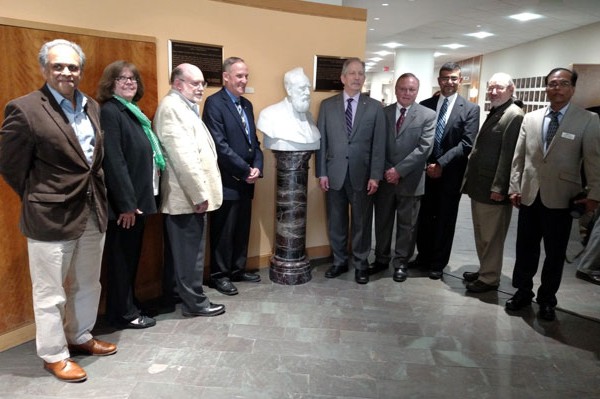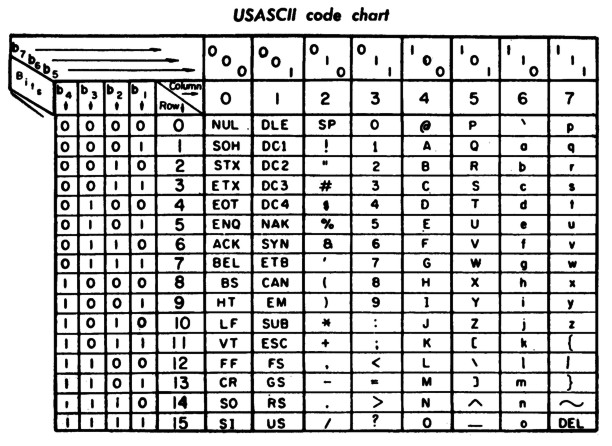| IEEE Milestone for ASCII |
| Written by Sue Gee |
| Thursday, 02 June 2016 |
|
A plaque commemorating the invention of the American Standard Code for Information Interchange (ASCII) over 50 years ago has been installed in the lobby of the AT&T Labs in Middletown, New Jersey in recognition of its importance as an outstanding technical development. The IEEE Milestones in Electrical Engineering and Computing program honors significant technical achievements that occurred at least 25 years ago with bronze plaques, specifying the year, in this case 1963, and a brief citation.
At the dedication ceremony at AT&T held on May 19, 2016 two plaques, were unveiled, the other being for TAT-8 the first fiber-optic transatlantic communications cable. They are displayed on either side of the bust of Alexander Graham Bell. The citation explains what ASCII is and it link to AT&T: ASCII, a character-encoding scheme originally based on the Latin alphabet, became the most common character encoding on the World Wide Web through 2007. ASCII is the basis of most modern character-encoding schemes. The American Standards Association X3.2 subcommittee published the first edition of the ASCII standard in 1963. Its first widespread commercial implementation was in the American Telephone & Telegraph (AT&T) Teletypewriter eXchange network and Teletype Model 33 teleprinters.
ASCII, or US-ASCII, is the coding scheme that was used to represent text in computers until it was superseded by more extensive alternatives derived from it. Based on the English alphabet ASCII encodes 128 specified characters - the numbers 0-9, the letters a-z and A-Z, some basic punctuation symbols, some control codes that originated with Teletype machines, and a blank space - into the 7-bit binary integers. The Milestone proposal has more details of how it developed, how it is used, and its historical significance: ASCII developed from telegraphic codes. Its first commercial use was as a seven-bit teleprinter code promoted by Bell data services. Work on the ASCII standard began on October 6, 1960, with the first meeting of the American Standards Association's (ASA) X3.2 subcommittee. The first edition of the standard was published during 1963, a major revision during 1967, and the most recent update during 1986. Compared to earlier telegraph codes, the proposed Bell code and ASCII were both ordered for more convenient sorting (i.e., alphabetization) of lists, and added features for devices other than teleprinters. ASCII includes definitions for 128 characters: 33 are non-printing control characters (many now obsolete) that affect how text and space are processed and 95 printable characters, including the space (which is considered an invisible graphic). ASCII was the most commonly used character encoding on the World Wide Web until December 2007, when it was surpassed by the ASCII-derived UTF-8. Although ASCII has been superseded it is still there just below the surface and many programmer can't get out of the habit of thinking that it is still what we use. For example, who doesn't fall into the trap of thinking that strings are byte arrays of ASCII codes. This misunderstanding is made worse by the fact that ASCII forms the first 128 characters of UTF8. Things were much simpler when all text was in ASCII. More InformationMilestones:American Standard Code for Information Interchange ASCII, 1963 Related ArticlesIEEE Milestones for Whirlwind and SAGE Linus Torvalds Receives IEEE Computer Pioneer Award
To be informed about new articles on I Programmer, sign up for our weekly newsletter, subscribe to the RSS feed and follow us on Twitter, Facebook, Google+ or Linkedin.
Comments
or email your comment to: comments@i-programmer.info |
| Last Updated ( Friday, 03 June 2016 ) |



